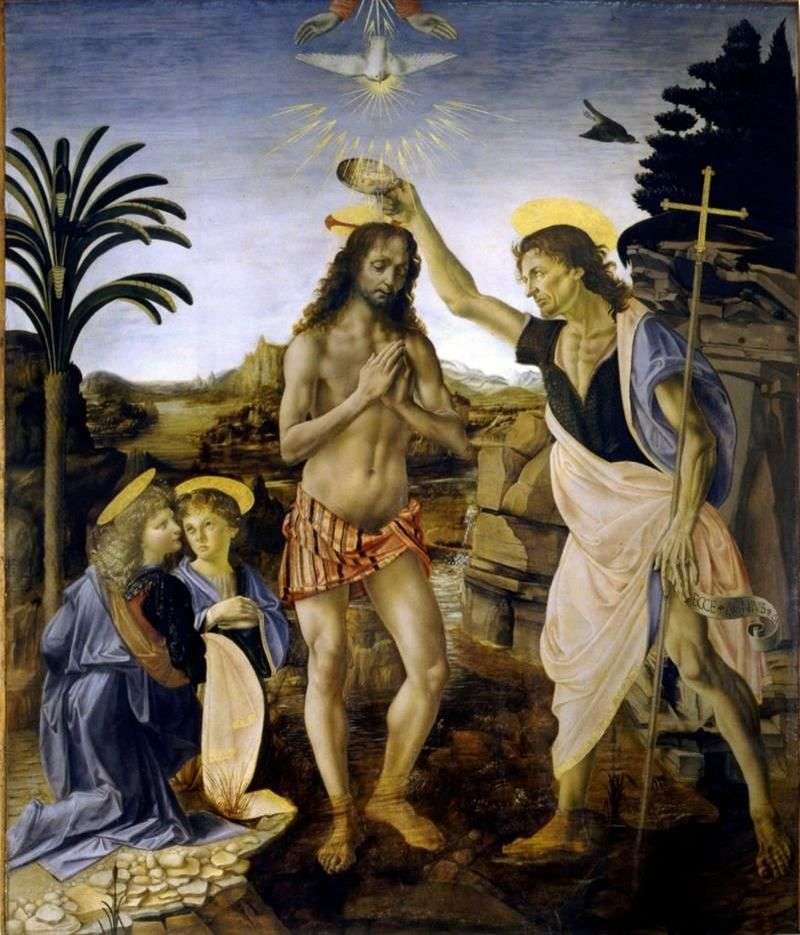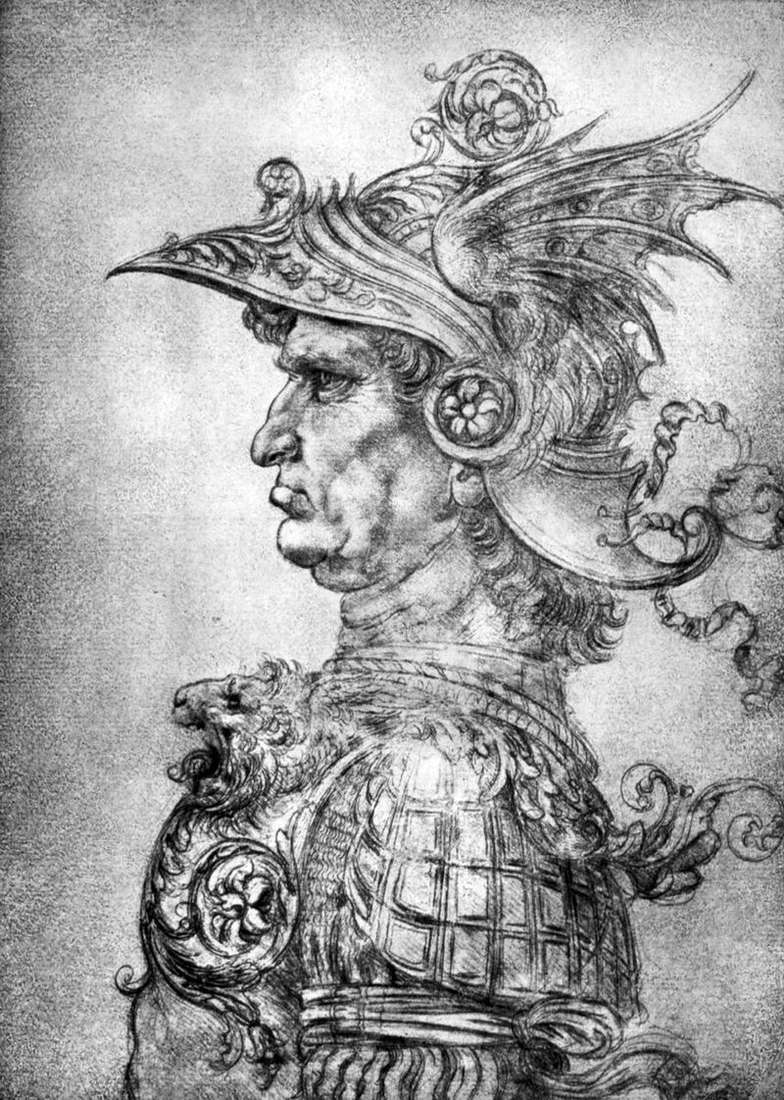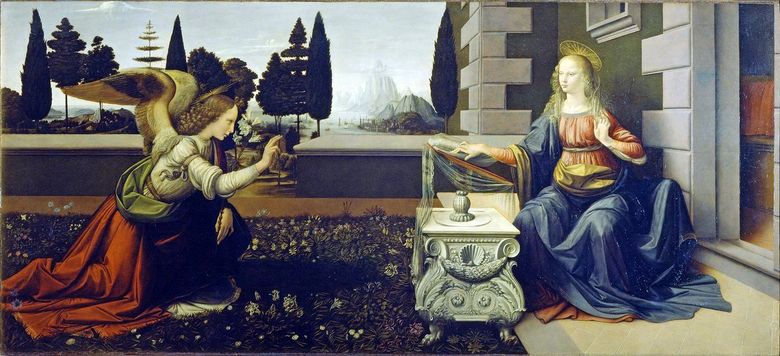
One of the first canvases on a religious theme, thought out and written by Leonardo himself, is the Annunciation. Art historians came to the conclusion that this work, which was attributed to the brush of the outstanding Florentine artist Domenico Ghirlandaio, in fact belongs to the brush of Leonardo.
Unfortunately, it is not known who could order the “Annunciation”, created by Leonardo around 1472-1475. Leonardo does not mention this picture in any of his entries or letters that have come down to us, but we remember that many of his records were lost. In the written contract is the date of the transaction and the date of the expected completion of the work. In it there is a description of the image, the number of figures to be depicted in the picture, the mention of the necessary colors is indicated. It is possible that the “Annunciation” was written by Leonardo in the workshop of Verrocchio, when he graduated from his apprenticeship and became a professional artist.
Researchers believe that this picture could be written as the Altarpiece for the church, which was rebuilt or updated around 1472-1473 in the convent of St. Bartholomew in Monte Oliveto, near Florence. The painting remained there until 1867, after which it was transferred to the Uffizi Gallery in Florence. The inscription on the back confirms that the picture hung in the sacristy, judging from other evidence, for some time it adorned the wall of the monastery refectory. The rectangular shape of the canvas indicates that it could hang directly above the altar.
In this picture, Leonardo uses a geometric perspective. The diagonal grid of floor tiles to the right of the figure of the Virgin Mary directs the viewer’s view of the landscape in the center of the picture and behind the building. Leonardo did not attach much importance to his ownership of the linear perspective: “A perspective is an illustrative reasoning by which experience confirms that all objects send their semblances along the lines of the pyramids to the eye.” While working on the painting, Leonardo continued to improve his skills as a painter.
The picture shows several ways of constructing an image typical for Verrocchio. Probably, this work could be written by Leonardo in the teacher’s workshop. For example, the movement of the hand of the Virgin Mary and the sculpture of her garments can testify to the influence of Verrocchio on the creativity of his pupil. The base of the analogue resembles the sculpture of Verrocchio at the grave of Piero de Medici in the church of San Lorenzo in Florence, which the master completed at this time.
Some features make it possible to judge that this work was a kind of practical task – a test at the end of studies. This also includes the richly decorated base of the analogue, dominating the center of the picture. All this suggests that the picture was an attempt by the student to create an independent work, with inaccuracies and flaws in the image typical of the young artist’s inexperienced hand. This would explain the lack of written testimonies about her, since the picture was not ordered by anyone, and would explain her stay in the monastery to which she was most likely given a gift.
The description of the history reflected in the composition is in the Gospel of Luke. There the archangel Gabriel, sent by God, proclaimed “Rejoice, Blessed is the Lord with You” and informed the pregnant Virgin Mary about her pregnancy. The archangel also called the born son “Jesus.”
 The Baptism of Christ by Leonardo da Vinci
The Baptism of Christ by Leonardo da Vinci Self-portrait by Leonardo Da Vinci
Self-portrait by Leonardo Da Vinci Warrior in helmet and armor by Leonardo da Vinci
Warrior in helmet and armor by Leonardo da Vinci L’Annonciation – Leonardo Da Vinci
L’Annonciation – Leonardo Da Vinci Madonna with a carnation by Leonardo Da Vinci
Madonna with a carnation by Leonardo Da Vinci Madonna with the Child and Saint Anna by Leonardo da Vinci
Madonna with the Child and Saint Anna by Leonardo da Vinci Saint Jerome by Leonardo Da Vinci
Saint Jerome by Leonardo Da Vinci Bacchus by Leonardo Da Vinci
Bacchus by Leonardo Da Vinci